 1995 Rover 400 (RT) Dimensions, Size & Specs
1995 Rover 400 (RT) Dimensions, Size & SpecsMeasurements of the 1995 Rover 400, engineered for optimal performance and comfort
| Dimensions | |
|---|---|
| Length: | 4491 mm176.8 in14.7 ft |
| Width: | 1695 mm66.7 in5.6 ft |
| Height: | 1390 mm54.7 in4.6 ft |
| Trunk Capacity: | 470 liter16.6 cu ft |
| Trunk Capacity (Max): | 810 liter28.6 cu ft |
| Weight Specifications | |
| Curb Weight: | 1120-1350 kg2469-2976 lbs |
| Maximal permitted Weight: | 1550-1830 kg3417-4034 lbs |
| Tire Specifications | |
| Rims Size: |
|
| Tire Sizes: |
|
The Rover 400 (RT) generation is a compact sedan produced from 1995 to 2000, combining practical dimensions with efficient use of space. The vehicle's length ranges between 4490 and 4491 millimeters (176.8 to 176.8 inches), a width of 1695 millimeters (66.7 inches), and height from 1385 to 1390 millimeters (54.5 to 54.7 inches), placing it comfortably in the compact car category suitable for urban and suburban use. Curb weight varies from 1120 to 1350 kilograms (2469 to 2976 pounds), depending on the configuration and equipment, offering a good balance between agility and ride comfort. The maximum permissible weight ranges between 1550 and 1830 kilograms (3417 to 4037 pounds), indicating a sturdy build capable of carrying passengers and cargo efficiently. One notable feature of the Rover 400 (RT) is its generous luggage capacity — 470 liters (approximately 16.6 cubic feet) with all seats in place, which expands significantly to 810 liters (28.6 cubic feet) when rear seats are folded down, making it versatile for carrying larger items or luggage on longer trips. The car rides on 14-inch rims with tire options including 175/65 R14, 185/60 R14 (available in H and non-speed rated versions), 185/65 R14 T, and 195/55 R15 H sizes, providing a good selection to balance between comfort and handling. Overall, the Rover 400 (RT) sedan from the mid-to-late 1990s presents a sensibly sized vehicle with functional interior space, suitable for drivers seeking practicality with a British automotive touch.
Discover the standout features that make the 1995 Rover 400 a leader in its class
Have a question? Please check our knowledgebase first.
The Rover 400 (RT) sedan, produced between 1995 and 2000, features a length ranging narrowly between 4490 mm to 4491 mm (176.8 to 176.8 inches), a width of 1695 mm (66.7 inches), and a height varying between 1385 mm to 1390 mm (54.5 to 54.7 inches). This size categorizes the car comfortably in the compact family sedan segment, offering a good balance of interior space and external maneuverability suitable for urban and suburban driving.
The Rover 400 (RT) sedan has a curb weight that ranges from 1120 kg to 1350 kg (approximately 2469 to 2976 lbs), depending on the trim and equipment levels. Its maximum authorized weight ranges from 1550 kg to 1830 kg (3417 to 4037 lbs). This weight spread affects fuel efficiency, handling, and acceleration. Lighter variants offer potentially better agility and fuel economy, while the higher weight limits accommodate more passengers and cargo safely, ensuring compliance with vehicle safety standards.
The luggage compartment of the Rover 400 (RT) offers a practical storage capacity of 470 liters (approximately 16.6 cubic feet) with the rear seats upright, which is ample for daily errands or medium-sized luggage. When the rear seats are folded down, the boot capacity significantly expands to 810 liters (28.6 cubic feet). This feature enhances the vehicle's utility, allowing transportation of larger items such as furniture or sports equipment, which is a valuable aspect for families and users requiring versatile cargo space.
Yes, the Rover 400 (RT) fits comfortably into a standard residential garage. With a length of 4490 mm (176.8 inches), a width of 1695 mm (66.7 inches), and a height close to 1385-1390 mm (54.5 to 54.7 inches), the vehicle is within the typical dimensions that standard garages accommodate. Most residential garages are built to fit cars around 5 meters (16.4 feet) in length and 2.4 meters (7.9 feet) in width, so this sedan leaves ample room for opening doors and storage around the vehicle.
The Rover 400 (RT) is equipped with 14-inch rims paired with a variety of tire sizes including 175/65 R14, 185/60 R14 (available in H and non-rated versions), 185/65 R14 T, and 195/55 R15 H. The use of 14-inch rims and slightly narrower tires contributes to a comfortable ride quality with good absorption of road bumps, while also maintaining sufficient grip and responsiveness suitable for a compact family sedan. The tires marked H or T indicate speed ratings that align with moderate cruising capabilities without compromising safety or comfort.
Compared to similar mid-1990s compact sedans like the Ford Escort or Opel Astra, the Rover 400 (RT) maintains a fairly standard width of 1695 mm (66.7 inches), which is well within the average for this class, promoting good maneuverability in urban environments. Its height of 1385 to 1390 mm (54.5 to 54.7 inches) and length of roughly 4490 mm (176.8 inches) align closely with competitors, making it neither overly tall nor lengthy. This balanced sizing provides a stable ride and sufficient cabin space while matching the compact footprint expected by buyers during that period.
The Rover 400 (RT)’s exterior dimensions translate into a reasonably spacious interior cabin for a compact sedan. Its width of 1695 mm (66.7 inches) allows for comfortable seating arrangements, typically accommodating five passengers. The relatively moderate height (1385-1390 mm or 54.5-54.7 inches) supports adequate headroom for most adults, although taller passengers might find the space slightly limited in the rear seats. The flat rear floor and generous legroom contribute positively to passenger comfort on short and medium trips, making this model suitable for families and daily commuting.
The Rover 400 (RT), launched in 1995, was a redesign and evolution from the earlier Rover 400 series produced in the late 1980s to early 1990s. Compared to its predecessor, the RT generation featured slightly increased length and overall refinement for a more modern look and improved interior space utilization. While both generations were similar in width and height, the RT model typically benefitted from enhanced ride quality and updated dimensions that maximized cabin space and luggage volume, reflecting advances in car design and consumer demands of the mid-1990s.
Size-wise, the Rover 400 (RT) sedan holds its own against competitors such as the Volkswagen Golf and the Honda Civic of the mid-to-late 1990s. With a length of around 4490 mm (176.8 inches), it is slightly longer than most hatchback variants of these competitors, offering better rear legroom and trunk capacity by design. Its width of 1695 mm (66.7 inches) is comparable, aiding in urban drivability, while its height is typical for sedans of the era. These dimensions contribute to a vehicle that is both practical and comfortable for daily driving, ranking it competitively among compact family car alternatives of its time.
The Rover 400 (RT)’s compact dimensions—length just under 4.5 meters (14.7 feet) and moderate width of 1.695 meters (5.56 feet)—make it a nimble and agile vehicle well-suited for city driving and parking in tighter spaces. Its relatively light curb weight (1120 to 1350 kg or 2469 to 2976 lbs) enhances handling responsiveness and fuel efficiency, which are critical in urban stop-and-go traffic. The balanced size also ensures the vehicle is stable on highways while flexible enough to manage narrow lanes and congested streets comfortably, making it a versatile option for both city and suburban drivers.
Discover similar sized cars.
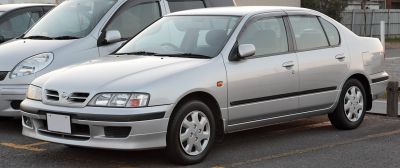
| Production: | 1995-2002 |
|---|---|
| Model Year: | 1995 |
| Length: | 4430-4522 mm174.4-178.0 in |
| Width: | 1715 mm67.5 in |
| Height: | 1410 mm55.5 in |

| Production: | 1987-1991 |
|---|---|
| Model Year: | 1987 |
| Length: | 4520 mm178.0 in |
| Width: | 1690 mm66.5 in |
| Height: | 1375 mm54.1 in |
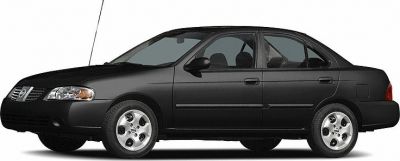
| Production: | 2000-2006 |
|---|---|
| Model Year: | 2000 |
| Length: | 4509 mm177.5 in |
| Width: | 1710 mm67.3 in |
| Height: | 1410 mm55.5 in |
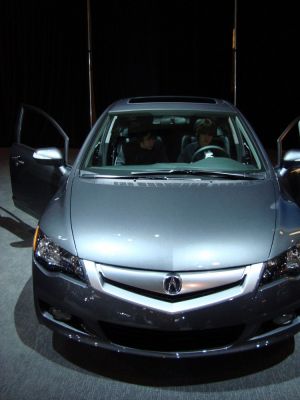
| Production: | 2009-2011 |
|---|---|
| Model Year: | 2010 |
| Length: | 4544 mm178.9 in |
| Width: | 1752 mm69.0 in |
| Height: | 1435 mm56.5 in |
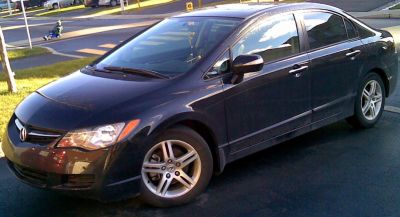
| Production: | 2005-2008 |
|---|---|
| Model Year: | 2006 |
| Length: | 4544 mm178.9 in |
| Width: | 1752 mm69.0 in |
| Height: | 1435 mm56.5 in |
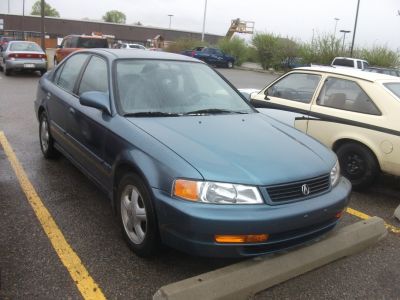
| Production: | 1997-2000 |
|---|---|
| Model Year: | 1997 |
| Length: | 4480 mm176.4 in |
| Width: | 1705 mm67.1 in |
| Height: | 1395 mm54.9 in |
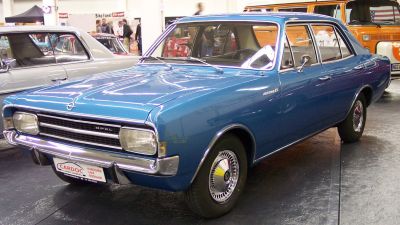
| Production: | 1966-1971 |
|---|---|
| Model Year: | 1966 |
| Length: | 4550 mm179.1 in |
| Width: | 1758 mm69.2 in |
| Height: | 1453 mm57.2 in |
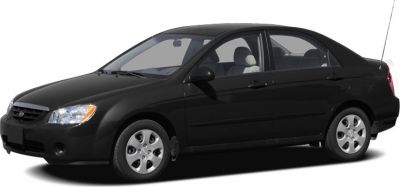
| Production: | 2005-2006 |
|---|---|
| Model Year: | 2005 |
| Length: | 4510 mm177.6 in |
| Width: | 1720 mm67.7 in |
| Height: | 1415 mm55.7 in |
